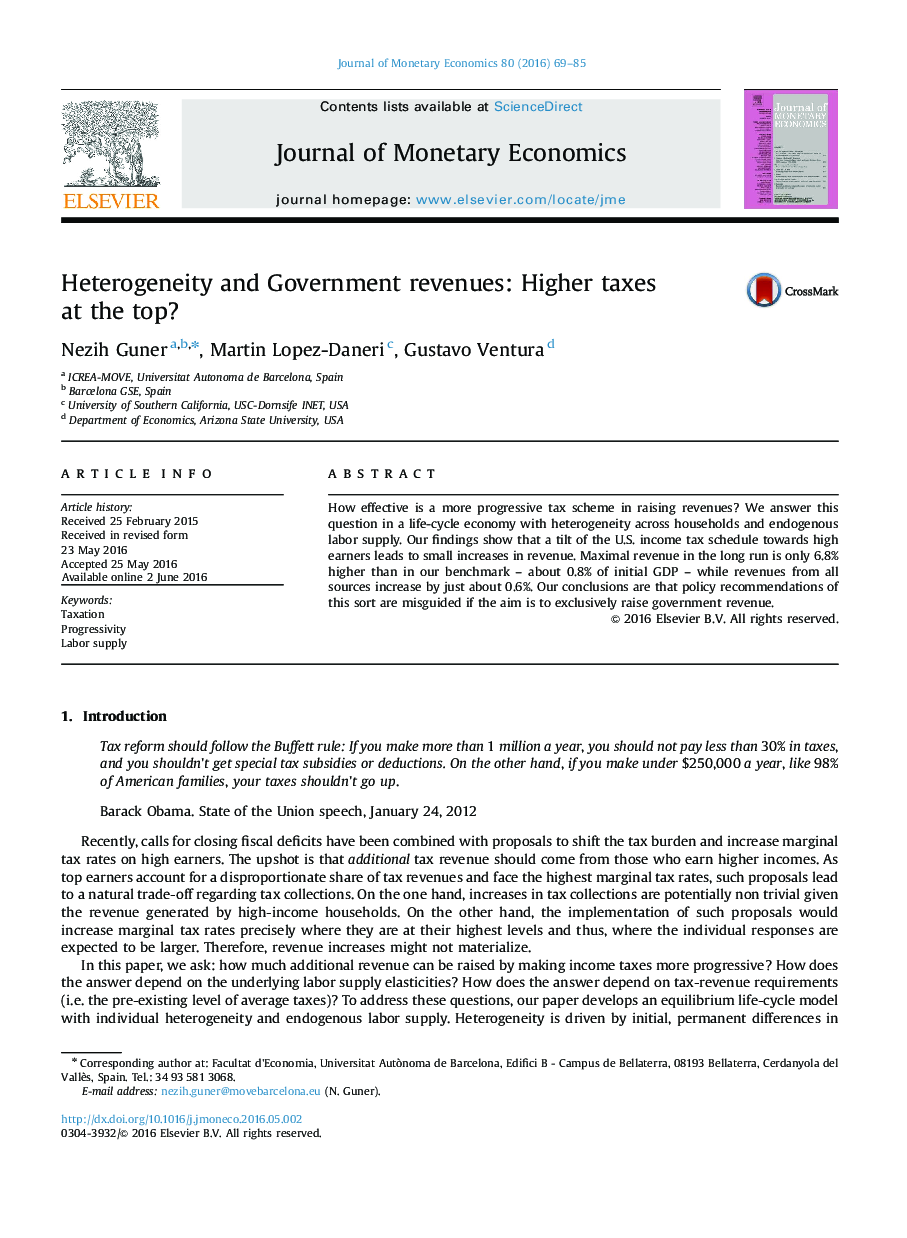| Article ID | Journal | Published Year | Pages | File Type |
|---|---|---|---|---|
| 967548 | Journal of Monetary Economics | 2016 | 17 Pages |
•We develop a life-cycle economy with heterogeneity and endogenous labor supply.•Model matches inequality data including the shares of labor income for top earners.•Shifting the income tax schedule towards high earners leads to small revenue gains.•Maximal revenue in long run is only 6.8% higher than in benchmark.•Policies of this sort are misguided if the aim is just to raise revenue.
How effective is a more progressive tax scheme in raising revenues? We answer this question in a life-cycle economy with heterogeneity across households and endogenous labor supply. Our findings show that a tilt of the U.S. income tax schedule towards high earners leads to small increases in revenue. Maximal revenue in the long run is only 6.8% higher than in our benchmark – about 0.8% of initial GDP – while revenues from all sources increase by just about 0.6%. Our conclusions are that policy recommendations of this sort are misguided if the aim is to exclusively raise government revenue.
